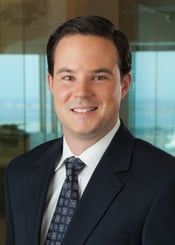
MACRO DRIVERS
Policy support remains in place while the global vaccination effort continues.
COVID-19 vaccine distribution within the United States has improved substantially since the early phases of the rollout. Certain restrictions and crowd limits are likely to remain in place for some time, but we believe an end to social distancing could be in sight by mid-summer 2021.
Wealthier nations have made more progress in vaccinating their populations, creating uneven vaccination rates around the world. We anticipate a more widespread global ramp-up, though progress will likely remain uneven.
Global economic activity appears set to accelerate, but vaccine distribution (or lack thereof), has contributed to diverging individual country growth expectations.
We believe the need for emergency fiscal policies and stimulus remains in most economies, though it should fade as the global economy reopens.
Monetary policy will likely remain highly accommodative in countries where inflation pressure remains low. We believe central banks like the Federal Reserve and European Central Bank should have the flexibility to remain focused on restoring labor market health.
We expect year-over-year inflation measures to spike over the next few months, due largely to base effects. We believe these sharp changes will be transitory in developed economies.
CREDIT
With company fundamentals set to improve, an upgrade cycle may lie ahead.
GOVERNMENT DEBT & POLICY
Treasury yields should drift rather than spike higher.
We believe quantitative easing, most notably the purchase of $80 billion of US Treasurys per month, is likely to continue through the latter half of 2021.
The Fed vowed to look through anticipated above-trend year-over-year economic data during the second quarter, which will be compared to levels at the depths of the downturn.
When the Fed is ready to move away from ultra-accommodative policy, we think one of its first moves will be tapering asset purchases. Embarking on a new rate-hiking cycle is a separate policy decision that may not materialize until mid-2023 or later.
We believe the front end of the US yield curve is likely to remain anchored for the foreseeable future, but 5- to 30-year yields are likely headed higher. We view rising rates as a positive sign of cyclical improvement within the domestic economy.
With the recent move off pre-pandemic lows behind us, we believe US rates will trend higher at a much slower pace. Rates in developed Europe may trend higher too, but likely at a pace that is commensurate with less-robust growth in that region.
Rising US Treasury yields tend to represent a headwind for sovereign and local-currency emerging market bonds. However, we expect the asset class to remain resilient as the global economy recovers.
CURRENCIES
Idiosyncratic factors will likely drive foreign currency performance.
EQUITIES
The global bull market is still young.
POTENTIAL RISKS
It’s too soon to remove accommodative policies.
ASSET CLASS OUTLOOK
Disclosure
This commentary is provided for informational purposes only and should not be construed as investment advice. Any opinions or forecasts contained herein reflect the subjective judgments and assumptions of the authors only and do not necessarily reflect the views of Loomis, Sayles & Company, L.P. Investment recommendations may be inconsistent with these opinions. There is no assurance that developments will transpire as forecasted and actual results will be different. Data and analysis do not represent the actual or expected future performance of any investment product. Information, including that obtained from outside sources, is believed to be correct, but Loomis Sayles cannot guarantee its accuracy. This information is subject to change at any time without notice.
Past performance is no guarantee of future results.
Indices are unmanaged and do not incur fees. It is not possible to invest directly in an index.
Investing involves risk including possible loss of principal.
Commodity, interest and derivative trading involves substantial risk of loss.
LS Loomis | Sayles is a trademark of Loomis, Sayles & Company, L.P. registered in the US Patent and Trademark Office.
MALR027035

Loomis, Sayles & Company, L.P. | One Financial Center, Boston, MA 02111 | 800.343.2029
Sitemap | Privacy Policy | Cookie Policy | Important Information